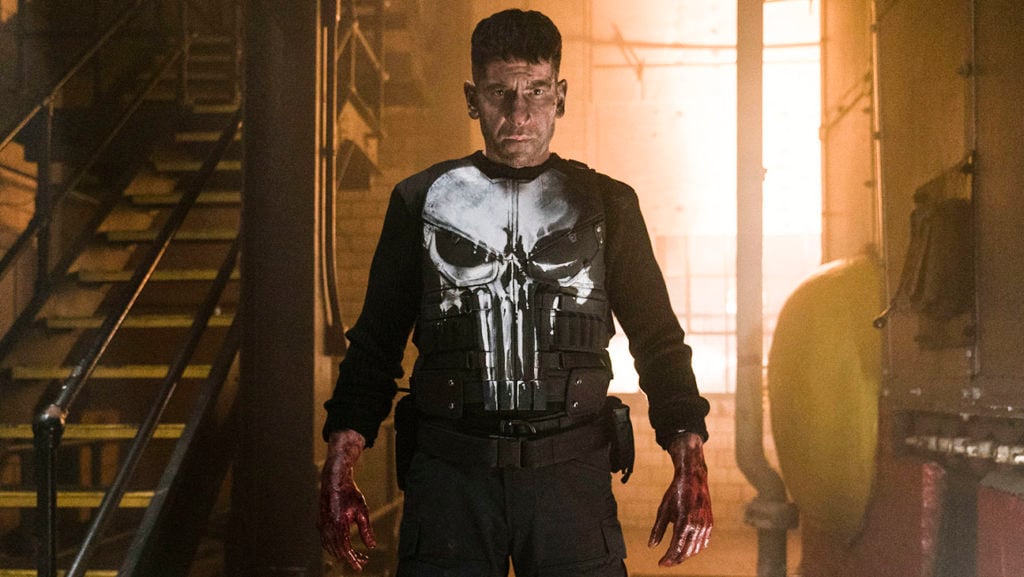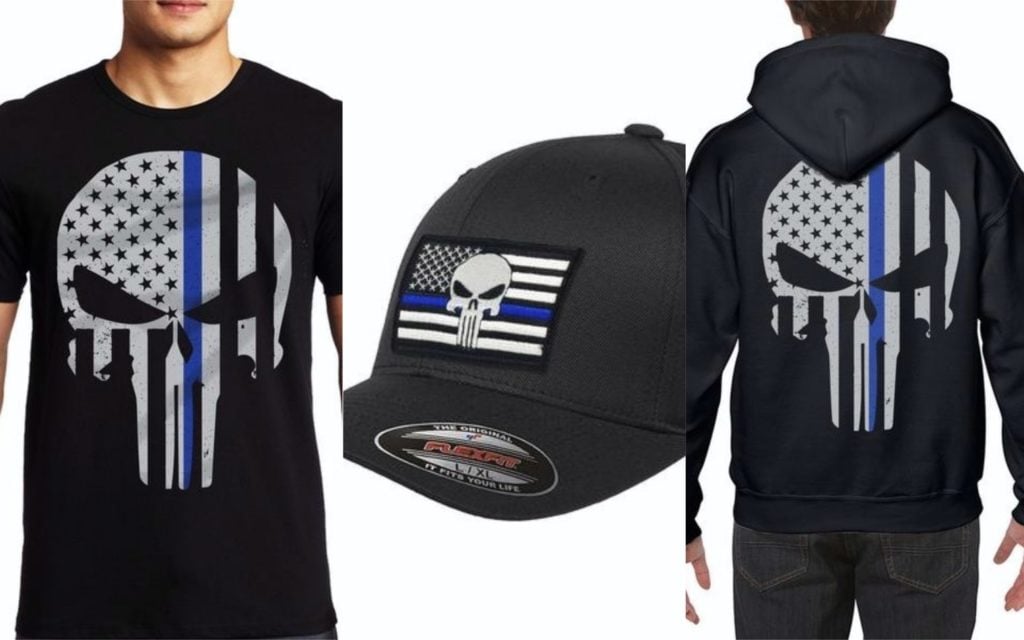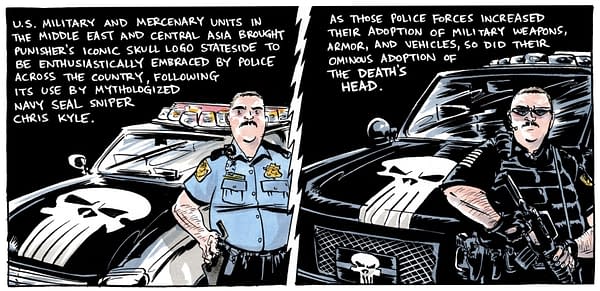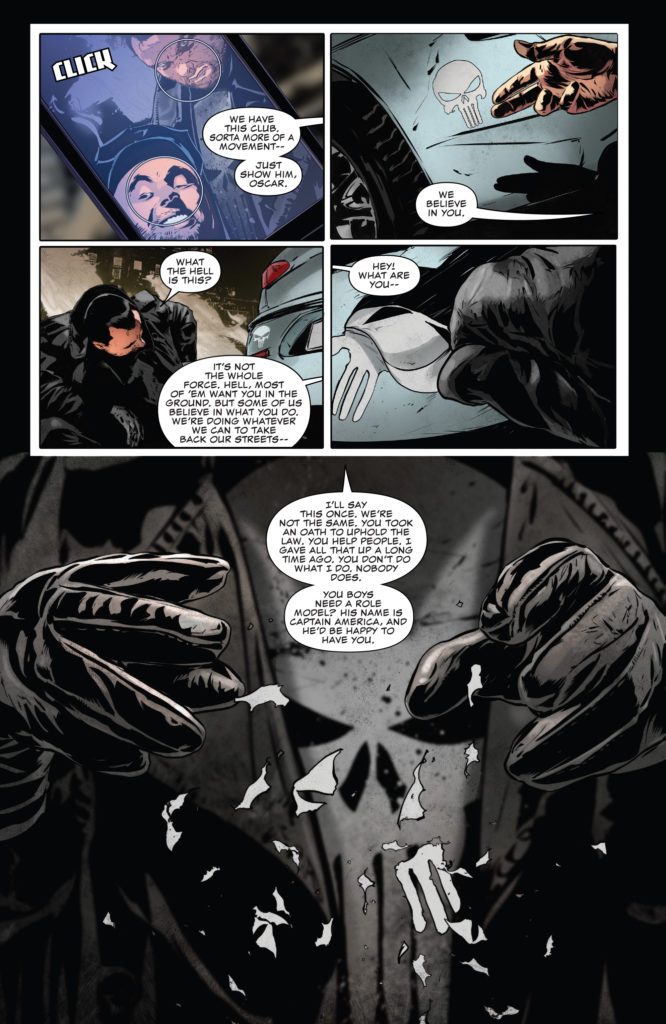Politics
Police in the US Have Embraced the Punisher Skull as an Unofficial Logo. Now the Character’s Creator Is Asking Artists of Color to Reclaim It
Gerry Conway doesn't want the Punisher skull to become a symbol of law enforcement.

Gerry Conway doesn't want the Punisher skull to become a symbol of law enforcement.

Sarah Cascone

The co-creator of the Punisher, Marvel’s murderously violent vigilante crimefighter, is calling on comic-book artists to create artworks reclaiming the character’s famous skull logo in the name of the Black Lives Matter movement.
Writer Gerry Conway opposes the appropriation of the symbol by police officers, some of whom have been seen wearing it at demonstrations protesting the killing of George Floyd.
“I’m looking for young comic book artists of color who’d like to participate in a small fundraising project for #BLM to reclaim the Punisher skull as a symbol of justice rather than lawless police oppression,” wrote Conway on Twitter. Artists will not be paid, but will retain the rights to use their art as they see fit, with money raised going to support then Black Lives Matter movement.
Frank “the Punisher” Castle, who Conway created with artists John Romita Sr. and Ross Andru, first appeared in a 1974 issue of The Amazing Spider-Man. Since then, the character has amassed one of the highest body counts in the Marvel universe, having killed 48,502 people as of 2011, according to the series’ then-editor. The morally compromised antihero often resorts to torture, kidnapping, and coercion in his fight against crime and police corruption.
Nevertheless, the character has been embraced by law enforcement and the military in the post-9/11 era. Navy SEAL Chris Kyle, who inspired the 2014 Clint Eastwood film American Sniper, wrote in his memoir that his unit painted the Punisher skull on their equipment during the Iraq War.

Punisher clothing from the Thin Blue Line company. Photo courtesy of the Thin Blue Line, Inc.
In more recent years, the Punisher skull has been adopted by pro-police Blue Lives Matter protestors, who have used the skull along with the Thin Blue Line flag, which is used to show support for law enforcement. There has also been concern over the Punisher logo’s official use by police forces in several states. Following a public outcry in 2017, a police chief in Kentucky who said “I consider it to be a ‘warrior logo,'” removed the emblem from squad cars.
(Proponents of the far-right-wing QAnon conspiracy theory, who maintain that there is a secret “deep-state” plot against Donald Trump, have also begun using the Punisher skull as a recruitment tool, and have created merchandise including a version of the logo featuring the president’s distinctive coiffed hair.)
Today, the police-themed version of the skull can be found on a wide variety of Blue Lives Matter- and military-themed merchandise, all in violation of Marvel’s copyright. The company Thin Blue Line USA offers its own Punisher skull sweatshirts and patches, but denies any correlation with vigilante justice.
“[The Punisher skull has] adopted a new meaning over the last few years. Less of a violent overtone, more of a promise to criminals: You might think you’re getting away with it, but it’s karma. If you’re committing violent acts, one way or another, you will be meeting consequences,” a company spokesperson told Inverse in 2017.
(A detailed history of the appropriation and commodification of the Punisher logo has been detailed in About Face, a comic strip essay by Nate Powell.)

Nate Powell, About Face. Courtesy of the artist.
Conway’s call for Black Lives Matter-themed Punisher art is not the first time that the writer has spoken out against the police’s appropriation of the character.
“To me, it’s disturbing whenever I see authority figures embracing Punisher iconography because the Punisher represents a failure of the justice system… so when cops put Punisher skulls on their cars or members of the military wear Punisher skull patches, they’re basically sid[ing] with an enemy of the system,” Conway told Syfy Wire last year, adding: “He is an outlaw. He is a criminal. Police should not be embracing a criminal as their symbol.”
The symbol has surfaced again during the protests over the police killing of George Floyd. Conservative commentator Sean Hannity has appeared on his Fox News show wearing a flag Punisher pin, and Detroit police patrolling demonstrations have been seen wearing the logo, which is inspired by the totenkopf, a skull-and-crossbones used by the SS in Nazi Germany.
Here are some photos of Detroit police apparently from today. Can anyone explain the skull? Given the use of the totenkopf by the SS, doesn’t it seem just a little bit inappropriate?? pic.twitter.com/j3KES75kcb
— Nick Krieger (@nckrieger) June 3, 2020
Marvel told Gizmodo it was “taking seriously” unlicensed use of Punisher imagery and reiterated the company message that “we stand against racism.” (A Detroit police spokesperson insisted that “any expression of this fictional character in no way reflects the values of the Detroit Police Department, nor will its use be tolerated.”)
The use of the Punisher skull by the military, police, and Blue Lives Matter supporters persists even though the character himself specifically weighed in on the matter in a July 2019 issue written by Matthew Rosenberg.
In the strip, the Punisher encounters a group of police using his logo and tells them: “We’re not the same. You took an oath to uphold the law. You help people. I gave all that up a long time ago. You don’t do what I do. Nobody does.”

The Punisher tells police in a July 2019 issue not to wear his logo. Courtesy of Marvel Comics.
Of course, Castle’s extreme crimefighting methods also make his logo a strange fit for the Black Lives Matter—which Conway is quick to acknowledge.
“As to the debate over whether the Punisher symbol can ever be a symbol for justice—I agree that’s an open question,” he wrote on Twitter. “What it must *not* be is a symbol of oppression. I want to deny police the use of the symbol by claiming it for BLM. Call it irony.”